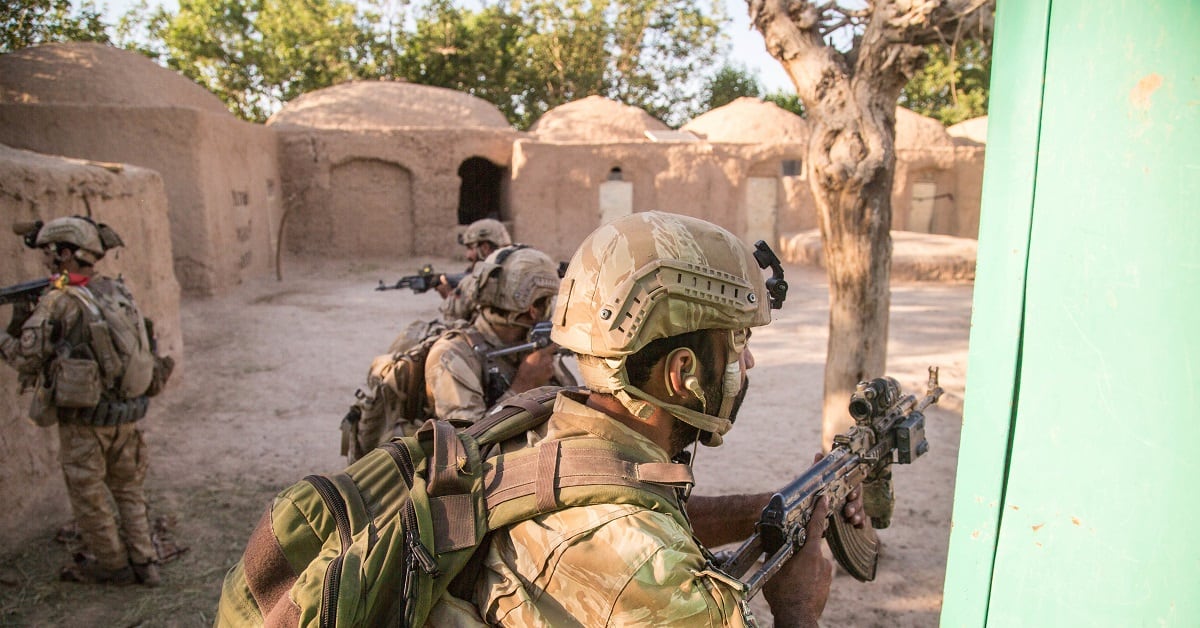Another bloody year of fighting in Afghanistan is almost in the books as peace negotiations between the U.S. and Taliban seek an end to America’s longest war.
But Pentagon officials won’t provide any metrics to highlight whether Afghan forces made any battlefield progress in their fight against the Taliban and other militants across the country in 2019.
“I’m not going to get into specifics with respect to metrics," Rear Adm. William D. Byrne Jr., vice director of Joint Staff, told reporters during a Pentagon press briefing Thursday.
Byrne told reporters that Army Gen. Austin Miller, the commander of U.S. forces in Afghanistan, was “satisfied” with the current force posture to carry out counterterror and advising missions.
RELATED

Byrne’s response came following a question from a reporter regarding battlefield progress made by Afghan forces in 2019.
Jonathan Hoffman, the chief spokesman for the Pentagon, highlighted the September Afghan election that were carried out “relatively violence free” as evidence of success for Afghan security forces in 2019.
The number of “major attacks” during the Afghan election was “minimal," Hoffman explained. Afghan forces were able to deploy and provide that security for the Afghan people, he said.
The results of September’s election have yet to be released.
Rosy metrics provided by the U.S. military regarding progress of the Afghan war have been questionable in the past.
The Washington Post recently reported comments made by U.S. military and diplomatic officials indicating that for years those in charge of America’s longest war were often pressured to produce meaningless statistics and metrics that showed progress.
The comments made by U.S. officials were obtained by the Washington Post through a government records request.
John Garofano, who advised Marines in Helmand in 2011, said during a 2015 government interview that a lot of effort was put into producing color-coded charts that showed the war was moving in the right direction, and no one questioned the credibility of the information or whether it was helpful, according to the Washington Post.
“They had a really expensive machine that would print the really large pieces of paper like in a print shop,” Garofano said in the 2015 interview, according the Washington Post. “There would be a caveat that these are not actually scientific figures, or this is not a scientific process behind this.”
The comments by U.S. officials were made as part of a project led by John Sopko known as “Lesson Learned” about the war in Afghanistan. Sopko is the lead inspector general for a government watchdog group known as the Special Inspector General for Afghanistan Reconstruction.
Asked by a reporter Thursday whether Americans could trust the metrics coming out of the U.S. military regarding the state of Afghanistan and the war effort, Hoffman said the current administration was being honest and transparent with the American people.
The Washington Post story, Hoffman said, was “looking at individuals giving retrospective years later on what they may have believed at the time.”
The Afghan war appears to still be in a stalemate as the control of terrain continues to jockey back and forth between the Taliban and Afghan government.
Much of Helmand Province, Afghanistan, with exception of the provincial capital of Lashkar Gah, is under control of the Taliban.
At the end of November, the Afghan government claimed they had cleared the volatile district of Marjah of Taliban militants. American A-10s and U.S. special operators supported Afghan forces in the nearly two-week clearance operation.
The U.S. recently resumed talks with the Taliban. Amidst the peace negotiations, Taliban fighters attempted to storm Bagram Air Base on Wednesday. U.S. forces called in airstrikes to halt the attack.
There are roughly 13,000 U.S. troops in Afghanistan.
Shawn Snow is the senior reporter for Marine Corps Times and a Marine Corps veteran.





